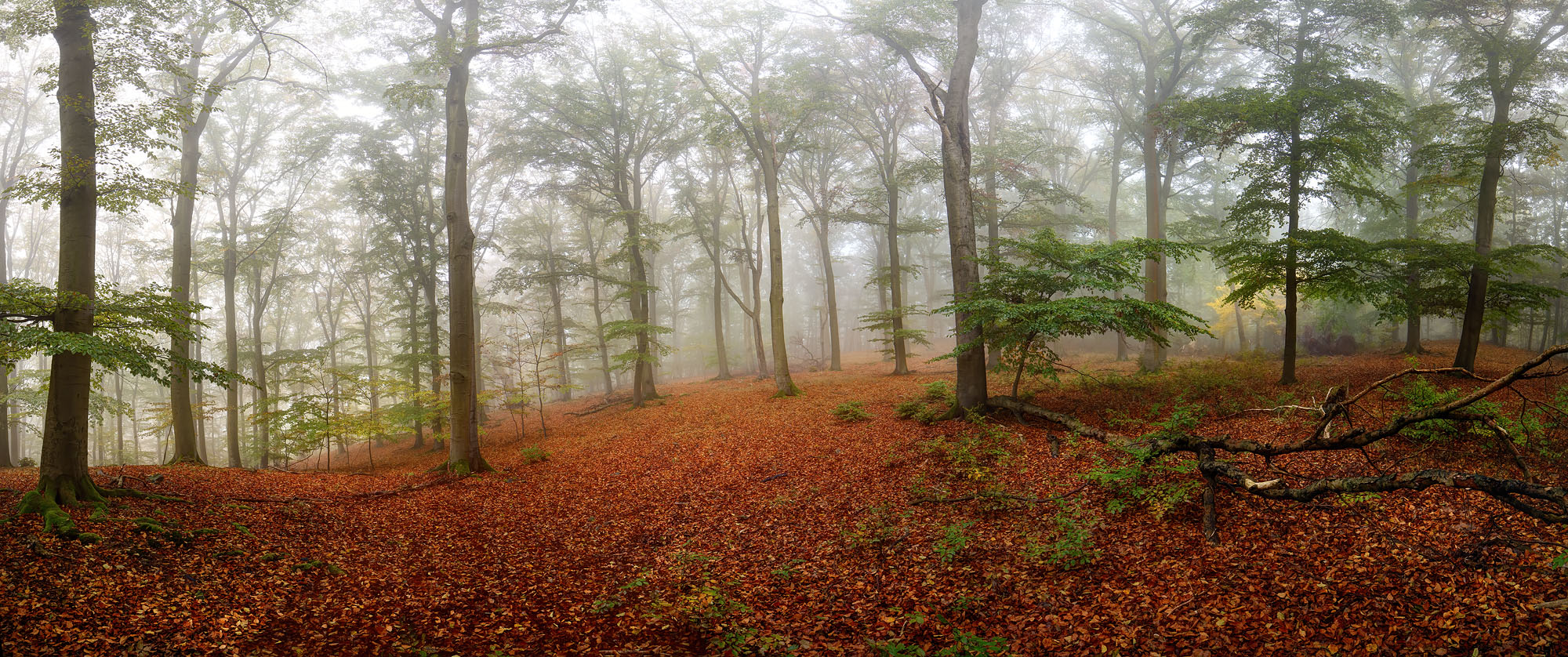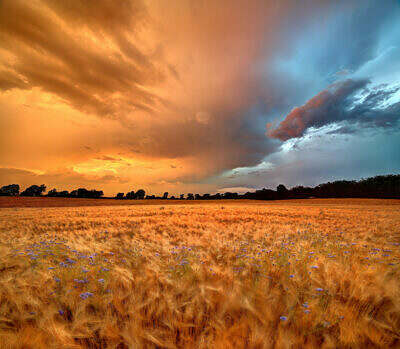The beech forests of the Kellerwald National Park surround the Edersee near Kassel on the eastern side of the Rheinisches Schiefergebirge mountains. The summit regions rise to 675 m (2.215 feet). The Kellerwald encloses one of the largest remaining beech forests in Central Europe. They originated as extensive primeval forests about 12.000 years ago after the end of the last ice age and the associated northward retreat of the glacial ice cap.
It is fascinating to imagine the landscape of the Kellerwald in four dimensions. This journey through time takes us back to the age of the armored fish about 380 million years ago, and we dive between the foggy fall-colored beeches into the tropical Rheia Ocean. One can almost taste the salty warm water and sense the armored fish in the mist between the trees as they chase after their primeval prey.





